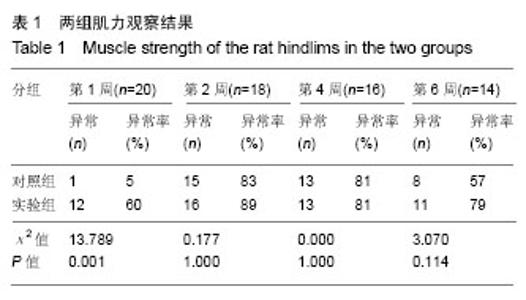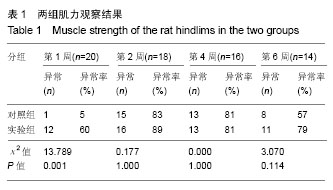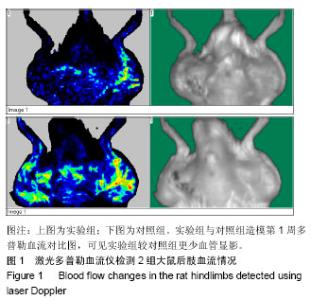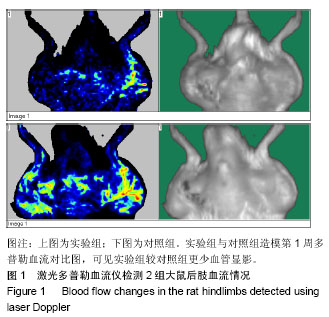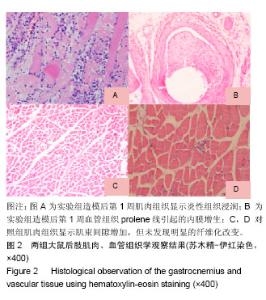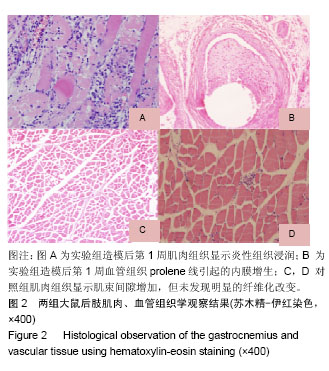| [1] Jin X, Kim DK, Riew TR, et al. Cellular and Subcellular Localization of Endoplasmic Reticulum Chaperone GRP78 Following Transient Focal Cerebral Ischemia in Rats. Neurochem Res. 2018;43(7):1348-1362. [2] Noiri E, Nakao A, Uchida K, et al. Oxidative and nitrosative stress in acute renal ischemia.Am J Physiol Renal Physiol. 2001;281(5):F948-957.[3] Ye Z, Kong Q, Han J, et al. Circular RNAs are differentially expressed in liver ischemia/reperfusion injury model. J Cell Biochem. 2018 May 18.[4] Meloux A, Rigal E, Rochette L, et al. P1742Experimental ischemic stroke in rats induce myocardial contractile dysfunction in vivo and ex vivo and increase cardiac vulnerability to ischemia-reperfusion injury ex vivo. Eur Heart J. 2017;38(suppl_1). [5] Liu Q, Jin W N, Liu Y, et al. Brain ischemia suppresses immunity in the periphery and brain via different neurogenic innervations. Immunity.2017; 46(3):474-487. [6] Brown JM, Grosso MA, Terada LS, et al. Endotoxin pretreatment increases endogenous myocardial catalase activity and decreases ischemia-reperfusion injury of isolated rat hearts. ProcNatlAcadSci U S A. 1989;86(7): 2516-2520. [7] Spreen MI, Martens JM, Knippenberg B, et al. Long‐Term Follow‐up of the PADI Trial: Percutaneous Transluminal Angioplasty Versus Drug‐Eluting Stents for Infrapopliteal Lesions in Critical Limb Ischemia. J Am Heart Assoc. 2017; 6(4). pii: e004877.[8] Lee DS, Jang MJ, Cheon GJ, et al. Comparison of the cost-effectiveness of stress myocardial SPECT and stress echocardiography in suspected coronary artery disease considering the prognostic value of false-negative results. J NuclCardiol. 2002;9(5):515-522. [9] EkinciAkdemir FN, Gülçin?, Karagöz B, et al. A comparative study on the antioxidant effects of hesperidin and ellagic acid against skeletal muscle ischemia/reperfusion injury. J Enzyme Inhib Med Chem. 2016;31(sup4):114-118. [10] Chouchani ET, Pell VR, James AM, et al. A unifying mechanism for mitochondrial superoxide production during ischemia-reperfusion injury. Cell metabolism.2016; 23(2): 254-263. [11] Zhang T, Zhang Y, Cui M, et al. CaMKII is a RIP3 substrate mediating ischemia-and oxidative stress–induced myocardial necroptosis. Nature medicine.2016;22(2):175. [12] Rossi A, Wragg A, Klotz E, et al. Dynamic Computed Tomography Myocardial Perfusion ImagingClinical Perspective: Comparison of Clinical Analysis Methods for the Detection of Vessel-Specific Ischemia. CircCardiovascImaging. 2017;10(4):e005505.[13] 杨盛家,陈兵,罗涛,等.大鼠后肢急性缺血模型的构建及评估[J].中国普通外科杂志,2009,18(6):580-583.[14] 杨盛家,陈兵,佟铸,等.应用激光多普勒血流仪对大鼠后肢缺血模型血流动力学的观察[J].中国普外基础与临床杂志,2011,18(2): 137-141.[15] 杨盛家,陈兵,罗涛,等.Lewis 大鼠慢性后肢缺血模型的制备与评价[J].中国普外基础与临床杂志,2012,19(12):1291-1297.[16] 黄莹,张建,陈兵,等.小鼠后肢缺血肌肉及骨髓氧分压与 HIF-1α蛋白水平的关系[J].中国普外基础与临床杂志,2015,22(1): 50-54.[17] Fujiwara N, Som A T, Pham L D D, et al. A free radical scavenger edaravone suppresses systemic inflammatory responses in a rat transient focal ischemia model. Neurosci Lett. 2016;633:7-13. [18] Wyers M, Shuja F. In Patients with Acute Mesenteric Ischemia Does an Endovascular or Hybrid Approach Improve Morbidity and Mortality Compared to Open Revascularization? //Difficult Decisions in Vascular Surgery. Springer, Cham, 2017: 221-233. [19] Dutkowski P, Schlegel A, Kron P, et al. Reply to “Reducing Nonanastomotic Biliary Strictures in Donation After Circulatory Death Liver Transplantation: Cold Ischemia Matters”. Ann Surg. 2017;266(6):e119-e120. [20] Manavski Y, Lucas T, Glaser S F, et al. Clonal Expansion of Endothelial Cells Contributes to Ischemia-Induced Neovascularization. Circ Res. 2018;122(5):670-677. [21] Tomita T M, Kibbe M R. Diagnostic Approach to Chronic Critical Limb Ischemia[M]//Critical Limb Ischemia. Springer, Cham. 2017:137-158. [22] Hoshijima H, Denawa Y, Mihara T, et al. Efficacy of prophylactic doses of intravenous nitroglycerin in preventing myocardial ischemia under general anesthesia: A systematic review and meta-analysis with trial sequential analysis. J ClinAnesth. 2017;40:16-22. [23] Shao Q, Casin K M, Mackowski N, et al. Adenosine A1 receptor activation increases myocardial protein S-nitrosothiols and elicits protection from ischemia-reperfusion injury in male and female hearts. PloS one.2017;12(5):e0177315. [24] Spreen MI, Martens JM, Hansen BE, et al. Percutaneous transluminal angioplasty and drug-eluting stents for infrapopliteal lesions in critical limb ischemia (PADI) trial. CircCardiovascInterv. 2016;9(2):e002376 . [25] Liotta F, Annunziato F, Castellani S, et al. Therapeutic Efficacy of Autologous Non-Mobilized Enriched Circulating Endothelial Progenitors in Patients With Critical Limb Ischemia-The SCELTA Trial.Circ J. 2018;82(6):1688-1698.[26] Inoue T, Abe C, Sun-sang J S, et al. Vagus nerve stimulation mediates protection from kidney ischemia-reperfusion injury through α7nAChR+ splenocytes. J Clin Invest. 2016;126(5): 1939-1952. [27] Dieter RA, Kuzycz GB, Morrow DW. Iatrogenic Extremity Ischemia with the Potential for Amputation//Critical Limb Ischemia. Springer.Cham.2017:241-247. [28] Ren C, Yao Y, Han R, et al. Cerebral ischemia induces angiogenesis in the peri-infarct regions via Notch1 signaling activation.Exp Neurol. 2018;304:30-40.[29] AbdElfattahHelal B, Elshrbiny RA, Shebl MM, et al. Study the Effect of Apocynin on Some Renal Functions in Ischemia/Reperfusion Injury in Male Albino Rats. Egyptian Journal of Hospital Medicine.2017;69(2). [30] Sabato Sorrentino, Claudio Iaconetti, Salvatore De Rosa, et al. Hindlimb Ischemia Impairs Endothelial Recovery and Increases Neointimal Proliferation in the Carotid Artery. Scientific Reports.2018;15(8).[31] Mantovani A, Bonapace S, Lunardi G, et al. Association between plasma ceramides and inducible myocardial ischemia in patients with established or suspected coronary artery disease undergoing myocardial perfusion scintigraphy. Metabolism. 2018;85:305-312. [32] Oerlemans M I F J, van Mil A, van Eeuwijk E, et al. Inhibition of miR-223 reduces inflammation but not adverse cardiac remodelling after myocardial ischemia-reperfusion in vivo. NCRI.2018;2(15). [33] Zheng DY, Zhou M, Jin J, et al. Inhibition of P38 MAPK downregulates the expression of IL-1β to protect lung from acute injury in intestinal ischemia reperfusion rats. Mediators Inflamm. 2016;2016:9348037. [34] Sunabori T, Koike M, Asari A, et al. Suppression of ischemia-induced hippocampal pyramidal neuron death by hyaluronantetrasaccharide through inhibition of Toll-like receptor 2 signaling pathway. Am J Pathol. 2016;186(8): 2143-2151. [35] Nakamura K, Sano S, Fuster JJ, et al. Secreted frizzled-related protein 5 diminishes cardiac inflammation and protects the heart from ischemia-reperfusion injury. J Biol Chem. 2016;291(6):2566-2575. |
